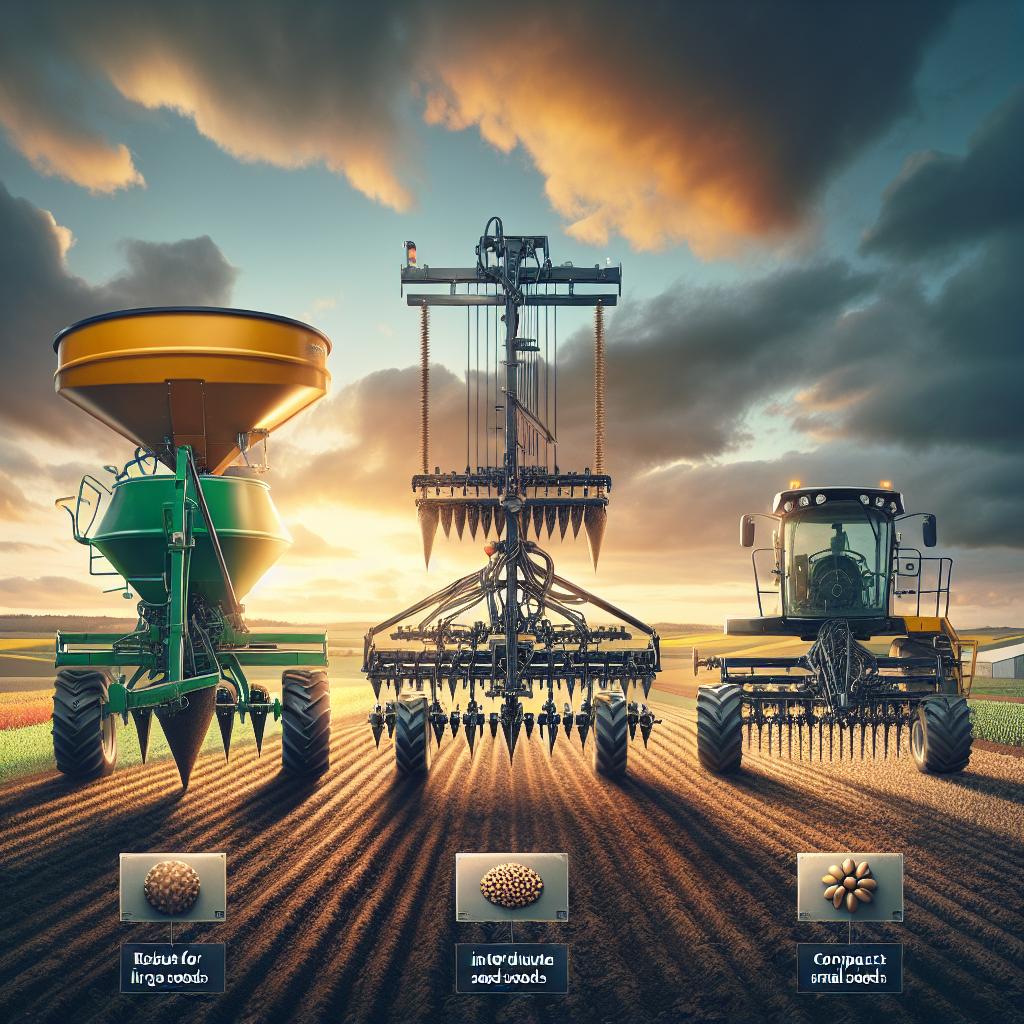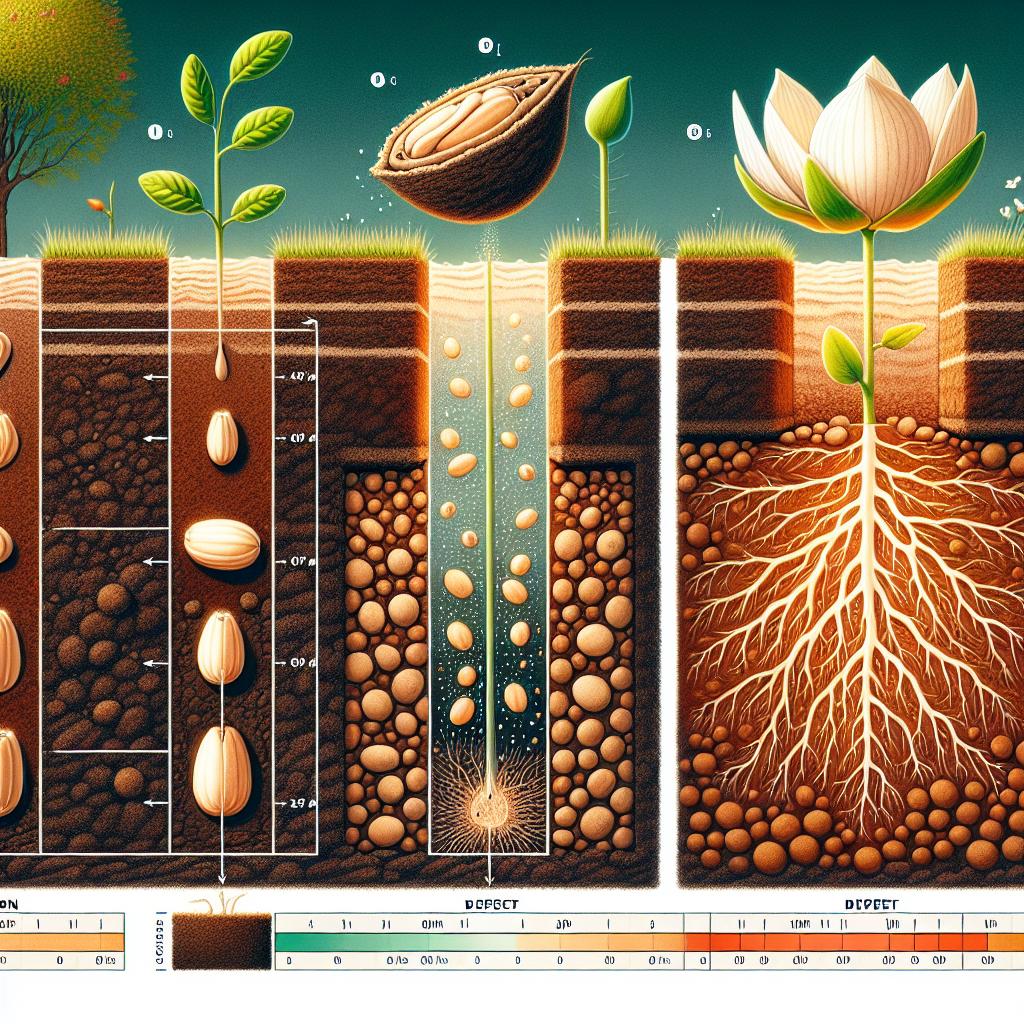This post may contain affiliate links which means I may receive a commission for purchases made through links. Learn more on my Private Policy page.
In the world of agriculture, precision is key, and the right tools can make all the difference in achieving a bountiful harvest. Among the essential machinery in any farmer’s arsenal is the grain drill—a device designed to sow seeds with accuracy and uniformity. But while the grain drill is a powerful ally, its efficacy hinges on understanding how to use it for various types of seeds. From tiny grass seeds to larger grains like corn and wheat, each requires a tailored approach to ensure optimal germination and growth. In this article, we will explore the art of maximizing your grain drill’s potential, providing you with practical tips and insights on how to adapt this versatile equipment to suit your specific planting needs. Whether you’re an experienced farmer or a novice gardener, mastering the grain drill can elevate your planting game and help you cultivate a thriving crop. Join us as we delve into the strategies that will transform your approach to seed planting and set you on the path to agricultural success.
Choosing the Right Grain Drill for Your Seed Varieties
When selecting a grain drill, understanding the specific requirements of your seed varieties is crucial for optimizing your planting strategy. Each seed type has unique characteristics that influence its performance, including seed size, shape, and germination rates. Choosing the right drill involves assessing the following factors:
- Row Spacing: Different crops thrive at various row widths; ensure your drill can accommodate the ideal spacing for your seeds.
- Seed Depth: Varieties have specific depth requirements; verify that the drill offers adjustable settings for precise planting.
- Metre Mechanism: Some seeds require gentle handling to avoid damage; choose a drill with a metering system suited for your seed type.
It’s also beneficial to evaluate the drill’s compatibility with different soil conditions and its maintenance needs over time. For instance, choosing a drill with the right opener type can aid in effective seed placement across varying terrains. Additionally, keep in mind:
| Feature | Importance |
|---|---|
| Durability | Ensures longevity and less frequent repairs |
| Adjustability | Allows for planting a variety of seeds efficiently |
| Compatibility | Works well with other equipment and implements |

Understanding Seed Placement and Depth for Optimal Growth
Getting seed placement and depth just right is crucial for the successful establishment of crops. Different varieties of seeds have unique requirements that can significantly impact their germination rates and overall health. For instance, small seeds, such as lettuce and clover, may necessitate a shallower planting depth, generally around 1/4 inch, while larger seeds, like corn and soybeans, should be sown deeper, often around 1 to 2 inches. Understanding these specific needs helps optimize seed-to-soil contact, enhances moisture absorption, and minimizes the risk of seed predation.
Using a grain drill can streamline the seeding process, allowing for consistent depth and spacing. To tailor your approach, consider the following tips for effective seed placement:
- Adjust the Seed Plates: Different seeds require different plates to achieve proper spacing.
- Set the Depth Properly: Before planting, calibrate the drill to the specific depth needed for the seed you are using.
- Monitor Soil Conditions: Check for moisture levels and soil type, as these factors can affect how deep seeds should be planted.
| Seed Type | Optimal Depth | Notes |
|---|---|---|
| Lettuce | 1/4 inch | Requires light for germination; plant shallow. |
| Corn | 1-2 inches | Needs sufficient soil moisture; deeper for dry soils. |
| Wheat | 1 inch | Optimal for winter crops to avoid frost damage. |

Adjusting Your Grain Drill Settings for Different Seed Sizes
To achieve optimal results when planting seeds with a grain drill, it’s essential to adjust the settings based on the size and type of seed you are using. Different sizes of seeds require specific settings to ensure proper depth, spacing, and distribution. When dealing with smaller seeds, such as alfalfa or clover, it’s crucial to use a finer seed plate and increase the population settings to avoid uneven application. In contrast, larger seeds, like corn or sunflower, may necessitate a wider seed plate with adjustments to the depth to allow for adequate soil coverage and moisture retention. Remember to check the seed box and distribution mechanism to ensure compatibility with your desired seed size.
In addition to adjusting the seed plate, the down pressure settings on your grain drill should be modified to accommodate different seed sizes. For lighter seeds, ensure the down pressure is minimal to prevent soil compaction, which could hinder seed germination. Conversely, heavier seeds may require increased down pressure to maintain seed-to-soil contact for effective growth. Below is a helpful guide for adjusting down pressure based on seed size:
| Seed Type | Down Pressure Setting |
|---|---|
| Small Seeds | Low |
| Medium Seeds | Moderate |
| Large Seeds | High |

Maintenance Tips for Longevity and Performance of Your Grain Drill
To ensure the longevity and optimal performance of your grain drill, regular maintenance is key. Start with routine inspections of critical components such as the seed tubes, coulters, and openers. Keeping these parts clean and free from debris will prevent clogging and enhance seed distribution. Additionally, checking the seed metering system is vital, as accurate seed placement directly influences crop yields. Don’t forget to examine the frame and wheels for signs of wear and tear, as a sturdy frame and properly aligned wheels contribute significantly to the unit’s stability during operation.
Another crucial aspect of maintenance involves calibration and adjustments. It’s essential to adjust the seeding depth according to the specific seed type and soil conditions to ensure optimal germination. Regularly calibrate the drill to maintain accurate seed rates, especially when switching between different seed varieties. Consider creating a maintenance schedule that includes lubrication of moving parts, tightening loose bolts, and replacing worn-out components. Keeping a maintenance log can also help track these activities, ensuring that your grain drill remains efficient season after season.
Q&A
Q&A: How to Effectively Use a Grain Drill for Planting Different Types of Seeds
Q1: What is a grain drill, and how does it differ from other seed planting equipment?
A1: A grain drill is a specialized piece of agricultural equipment designed to sow seeds in a precise and efficient manner. Unlike broadcast seeders that scatter seeds across the soil surface, a grain drill places seeds in rows at specific depths and spacing. This targeted approach ensures optimal seed placement for effective germination and growth, making it an ideal choice for various crops, from small grains to pulses.
Q2: What types of seeds can a grain drill be used to plant?
A2: A grain drill can be used for a wide variety of seeds, including but not limited to small grains such as wheat and barley, legumes like soybeans and peas, and cover crops such as clover and rye. Some drills are also adjustable, allowing you to adapt them for larger seeds like corn. Understanding the specifications of your grain drill is crucial, as each model may have limitations on seed size and type.
Q3: How do you prepare a grain drill for planting different seeds?
A3: Preparation starts with thoroughly cleaning the drill to prevent cross-contamination of seed types. You’ll then want to check and adjust the seed meter settings according to the specific type of seed you’re using—this includes calibrating for seed size and adjusting the planting depth. Ensure that the drill’s furrow depth is appropriate for the seeds you are planting to optimize germination rates.
Q4: What are the steps for calibrating a grain drill?
A4: Calibrating a grain drill is essential for achieving the desired seed spacing and depth. First, gather the seeds you’ll be planting and their recommended seeding rates. Next, fill the seed box and make several test runs on a controlled plot. Weigh the amount of seed left in the box after each run, and adjust the seed rate mechanism accordingly. Repeat this process until you achieve your target seeding rate per unit area.
Q5: Can environmental conditions affect how I use a grain drill?
A5: Absolutely, environmental conditions play a significant role in the effectiveness of using a grain drill. Factors such as soil moisture, temperature, and weather can impact seed germination and growth. For instance, planting in overly wet soils can lead to compaction and poor seed-to-soil contact, while dry conditions may require adjustments in planting depth and seed type. Always consider current weather patterns and soil condition before and during the planting process.
Q6: What maintenance is necessary for the grain drill before planting?
A6: Regular maintenance of your grain drill is essential for optimal performance. Inspect the mechanical components for wear or damage, ensure that seed tubes are clear and free from obstructions, and calibrate the seeding mechanism as mentioned. Also, check hydraulic systems and tire pressures if applicable. A well-maintained drill not only improves planting efficiency but also extends the life of the equipment.
Q7: Are there any best practices to follow while using a grain drill?
A7: Yes, some best practices include maintaining consistent speed while planting to ensure even seed distribution and depth. Additionally, monitor the drill during operation for any irregularities such as clogs or uneven spacing. Employing GPS guidance systems can also enhance accuracy, especially in larger fields. Lastly, keep an eye on weather conditions and adjust your planting schedule accordingly to encourage optimal seed germination.
Q8: How can I ensure a successful harvest after using a grain drill?
A8: To ensure a successful harvest, it is crucial to follow up with proper field management practices. This includes regular scouting for pests and diseases, maintaining soil fertility through comprehensive nutrient management, and implementing irrigation if necessary. Additionally, keeping records of seeding rates and field conditions can help refine your planting strategies for future seasons, leading to better yields.
With these insights, you’re now equipped with the knowledge necessary to harness the full potential of your grain drill and grow a thriving crop!
To Conclude
mastering the art of using a grain drill can transform your planting practices and elevate the success of your crop yields. By understanding the nuances of different seed types and their specific requirements, you can optimize the settings on your drill to ensure uniform planting depth, spacing, and soil contact. As you gain experience, don’t hesitate to experiment with various techniques and adjustments, tailoring your approach to the unique conditions of your fields. Remember, whether you’re sowing grains, pulses, or cover crops, patience and precision are your allies in achieving a bountiful harvest. With the right knowledge and tools at your disposal, each planting season can bring new opportunities for growth and innovation in your agricultural endeavors. Happy planting!
This post may contain affiliate links which means I may receive a commission for purchases made through links. Learn more on my Private Policy page.

